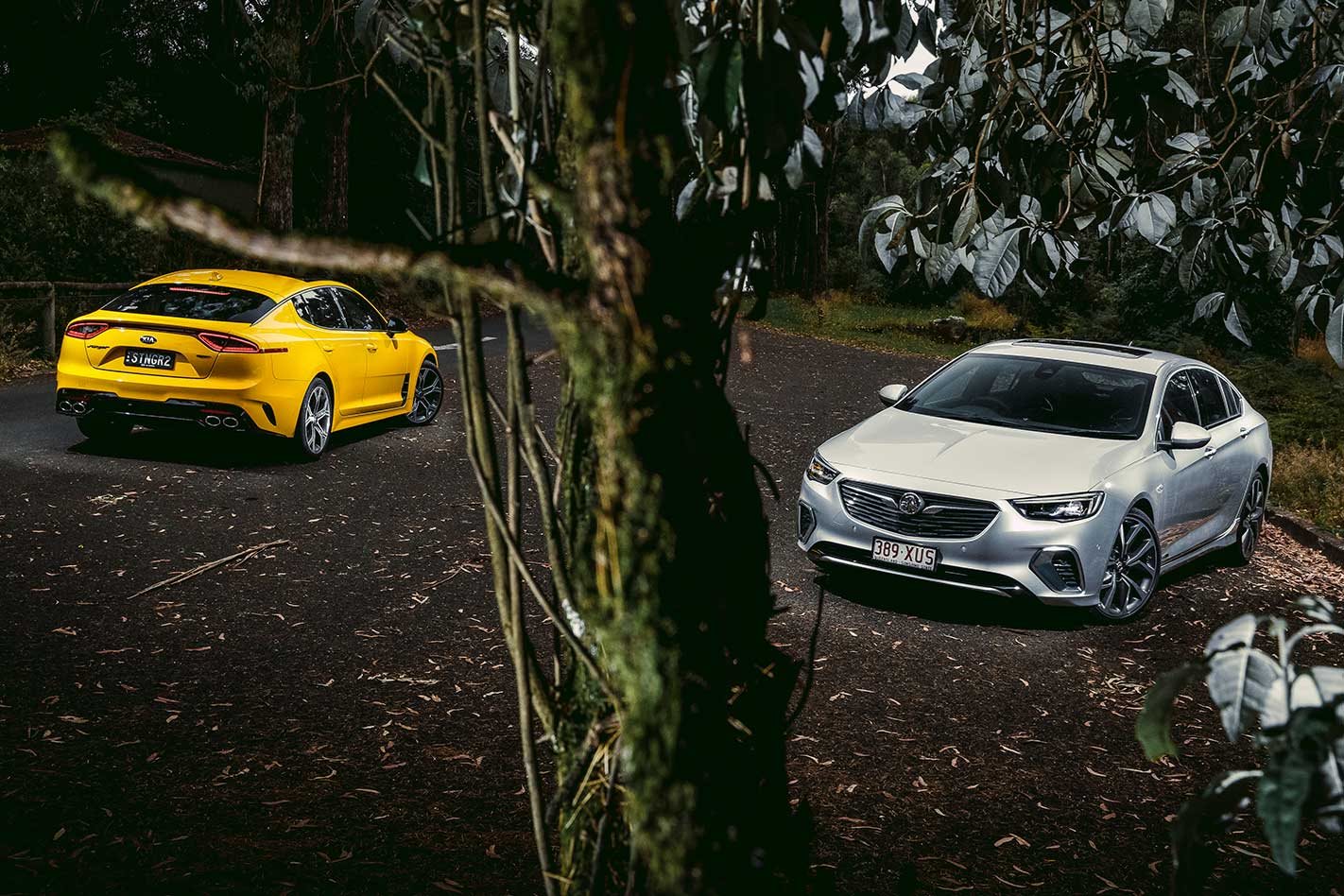Ever been to a fancy-dress party where two blokes have both turned up as Superman?
There are a couple of things wrong with this, starting with the fact that you’ve just found yourself at a fancy-dress party. And second, two delta-males trying to be the same thing at the same time is never going to end well.
Odds on there’ll be tears, starting with failed attempts to use X-ray vision to guess the colour of the hostess’s knickers. That’ll be followed by the sound of ambulance sirens as one wannabe superhero takes a swannie off the roof of the chook shed, trying to prove that only the real Superman can ‘fly’.
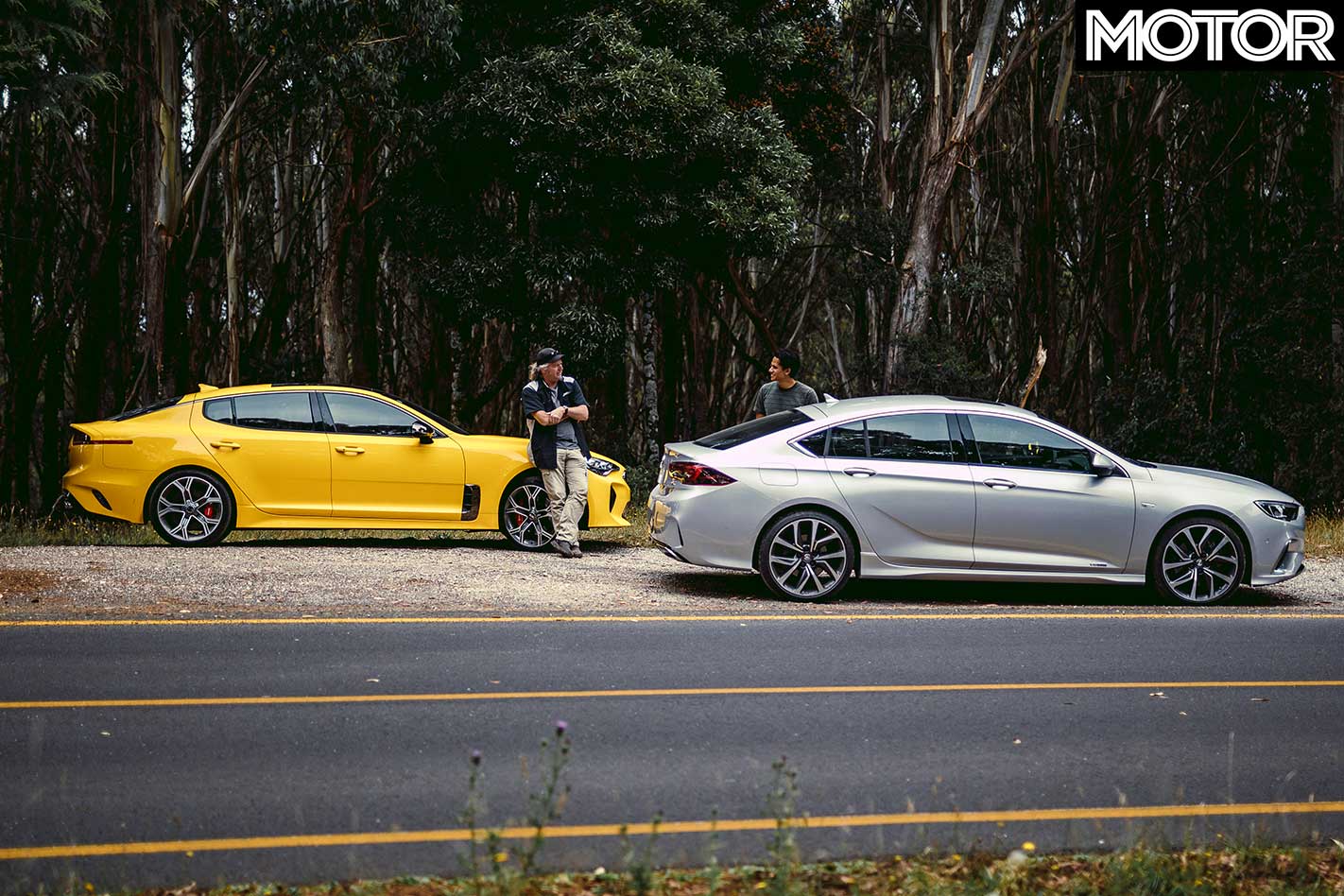
Okay, so we all know that a successor to something like the VF SS-V Redline will probably never exist, but in the meantime, both the Kia and the new Holden are sniffing around the ruck to pick up the rear-drive-Commodore crumbs.
The Kia, as the cleanskin, probably has less at stake, because it’ll attract its own followers regardless of any sense of tradition, imagined or otherwise.
For its part, Holden freely admitted to MOTOR that it knows the new ZB will never sell as well as the VF, nor will it ever attract the same quorum of default buyers who bought a succession of Commodores over a succession of decades. But don’t be fooled by such frankness; both these cars have a job description that involves – among many other things, admittedly – luring VF (and Falcon) owners in for a look-see.
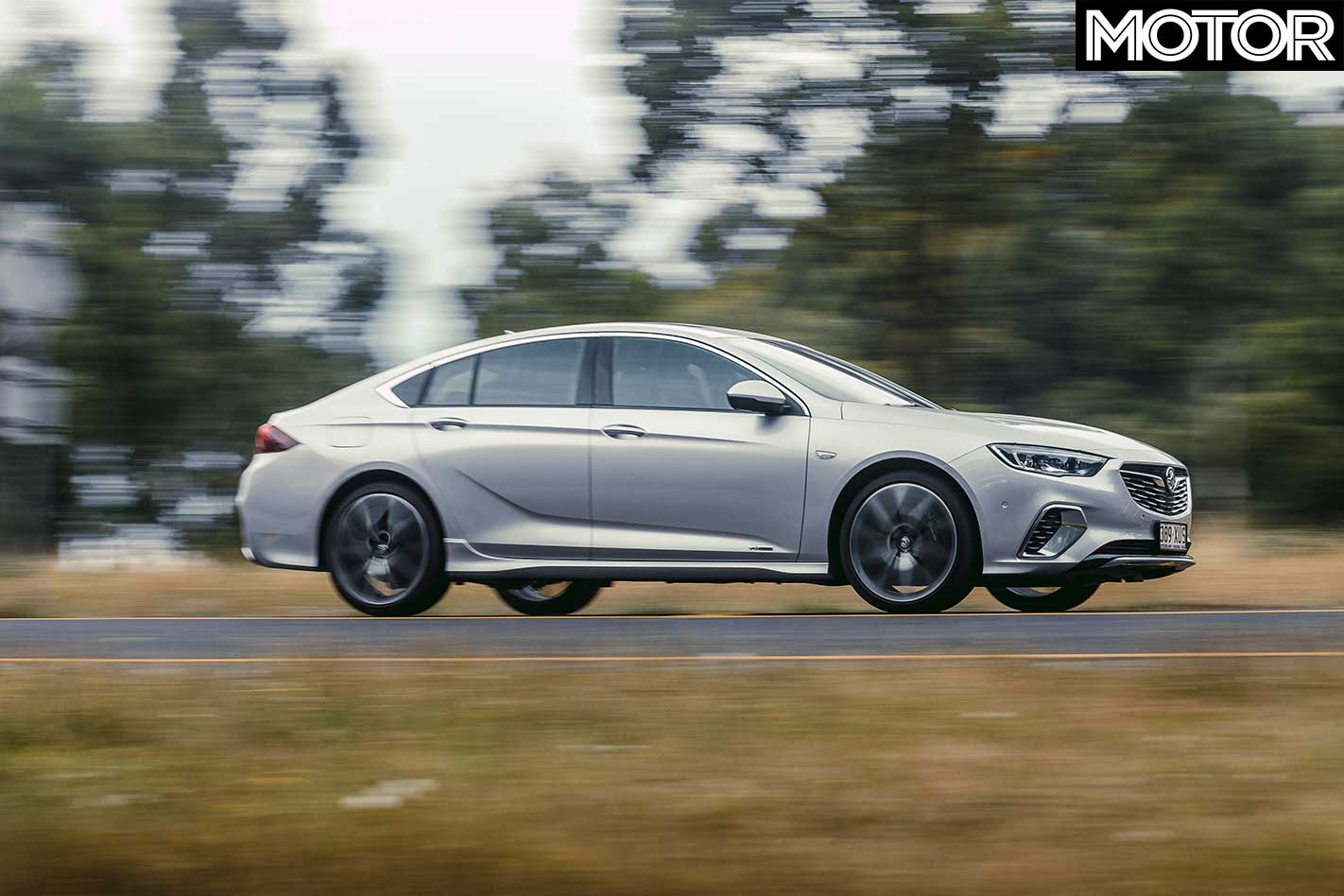
Ironically, it’s the non-Holden Kia Stinger that probably makes the most convincing case on paper. It’s rear-drive, just for starters, and that must surely be one of the big talking points for those staring at a lease-is-up VF or FG-X in the driveway. The Stinger isn’t a V8, of course, but at least with a pair of turbos bolted to the 3.3-litre V6, it makes the sort of power that local-V8 owners can relate to.
The ZB? Er, not so much. Yes, it’s a V6, but packaging constraints mean that there’s no hairdryer on board. And while it isn’t front-drive, it isn’t rear-drive, either, and the best Holden could come up with was to install all-wheel drive onto a platform that was essentially a tail-dragger in its purest form. And the Holden – despite what the contrived engine cover suggests – has its engine mounted east-west to prove the point.
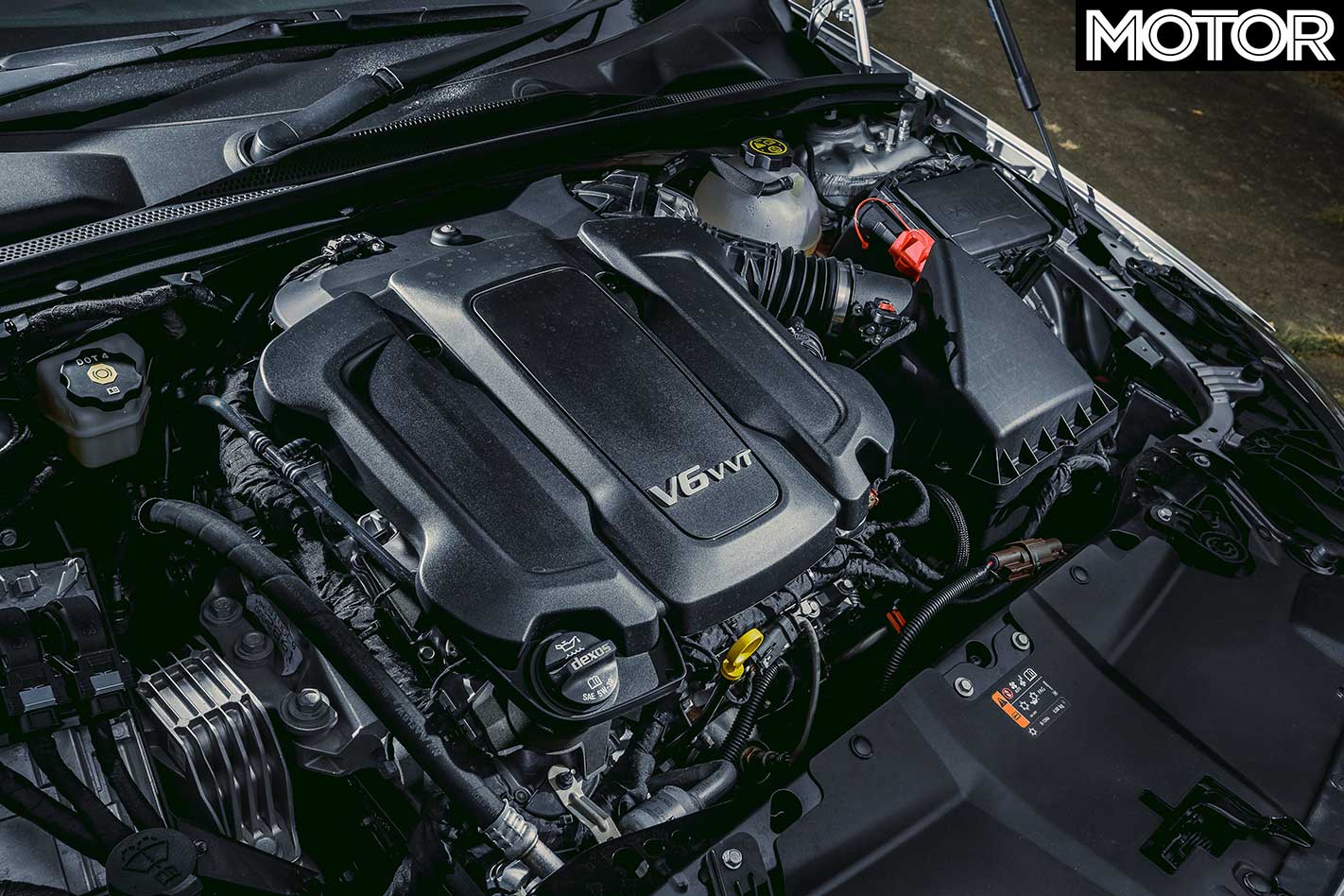
And guess what else? Neither of these cars is actually a sedan. They do their best to look like sedans (and the Holden is a bit more convincing) but the fact is that both are five-door liftbacks.
That said, they’re both quite handsome cars, although we reckon the ZB is a bit less obvious. That long snout on the Kia could, if you were the cruel type, be described as a bit try-hard. Nor is there a single manual gearbox option to be found anywhere within the Stinger and Commodore ranges and while that’s a reflection of 2018, it’s also an oversight for any carmaker trying to rope in an old-school car guy (or gal).
So if we’re not talking traditional performance sedan values, what are we dealing with when the stopwatch appears?
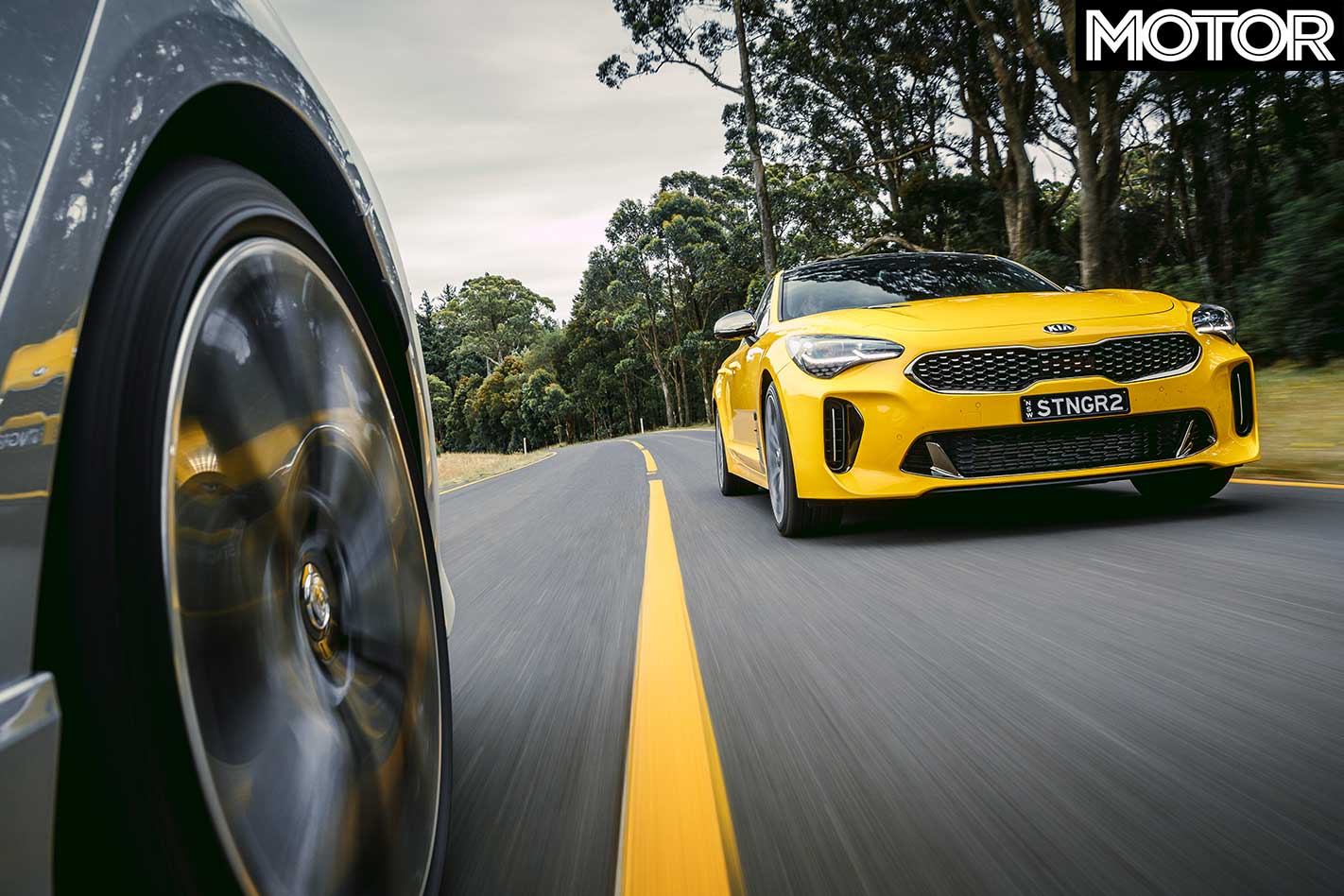
The Commodore certainly makes plenty of grunt with its 235kW but, without turbine-assistance, it’s all stacked up pretty high and the thing needs a solid rev to get going properly. That’s helped by the nine-speed auto which has plenty of low ratios on hand, but the 0-100km/h time of 6.1 seconds is left in the shade by the blistering five-seconds dead of the Stinger which, with a full 272kW and turbocharged mid-range to propel it, simply racks off.
We didn’t get a chance to run quarter miles back-to-back, but given the 0-100 time for the ZB, you can bank on something like a mid-14 for the 400m (that’s what it feels like, anyway). Meanwhile, the Stinger has just rattled off a 13-dead or maybe even a high-12 over that same stretch of hotmix and is already backstage in the green room, swilling Jack and eating caviar, having just performed a 400-metre mic-drop.

On the real roads of this wide, brown land, the gap closes up considerably. Why Kia thought it would be a good idea to team that crackerjack engine with a dumber-than-a-box-of-hammers auto is beyond us. Not that the eight-speed doesn’t shift nicely, because it does, but it’ll only hold the gear you select for about six seconds before it reverts to full auto. Why not flip it into manual mode? There isn’t one!
No, really, there isn’t. I checked twice. And even if you do issue a manual upshift command via the flippers, push the throttle past the détente and the Kia will kick-down as many gears as it physically can, even though your upshift instruction mere seconds ago would suggest this was not what you wanted.
The ZB’s nine-speed unit seems like one better, but in some aspects it’s not.

See, nine ratios sounds techy and grooved-up, but the reality is that there’s so little difference in ratios, particularly between second and third, that shifting twixt them manually feels more like the torque-converter has had a brain-fart rather than an actual ratio has changed. In part-throttle going, the ’box will probably shift from second straight to fourth and you won’t ever know it.
The other grizzle is the tall, tall gearing and Holden’s obvious attempt at chasing a fuel consumption number for the windscreen sticker.
At 100km/h in ninth, the ZB’s V6 is turning about 1500rpm which, really, isn’t far off idle and at a point in the rev range where it’s making about 12 horsepower (or so it feels). Which is fine if you’re shifting the cogs yourself, but left in D, the Holden will actually drop into top gear as low as (according to my tests) 84km/h.
At that point the engine is turning about 1300rpm and the poor old thing is lugging. In turn, that sends a shiver of discontent right through the seats and floor and a gravelly tone through the cabin. Not nice.
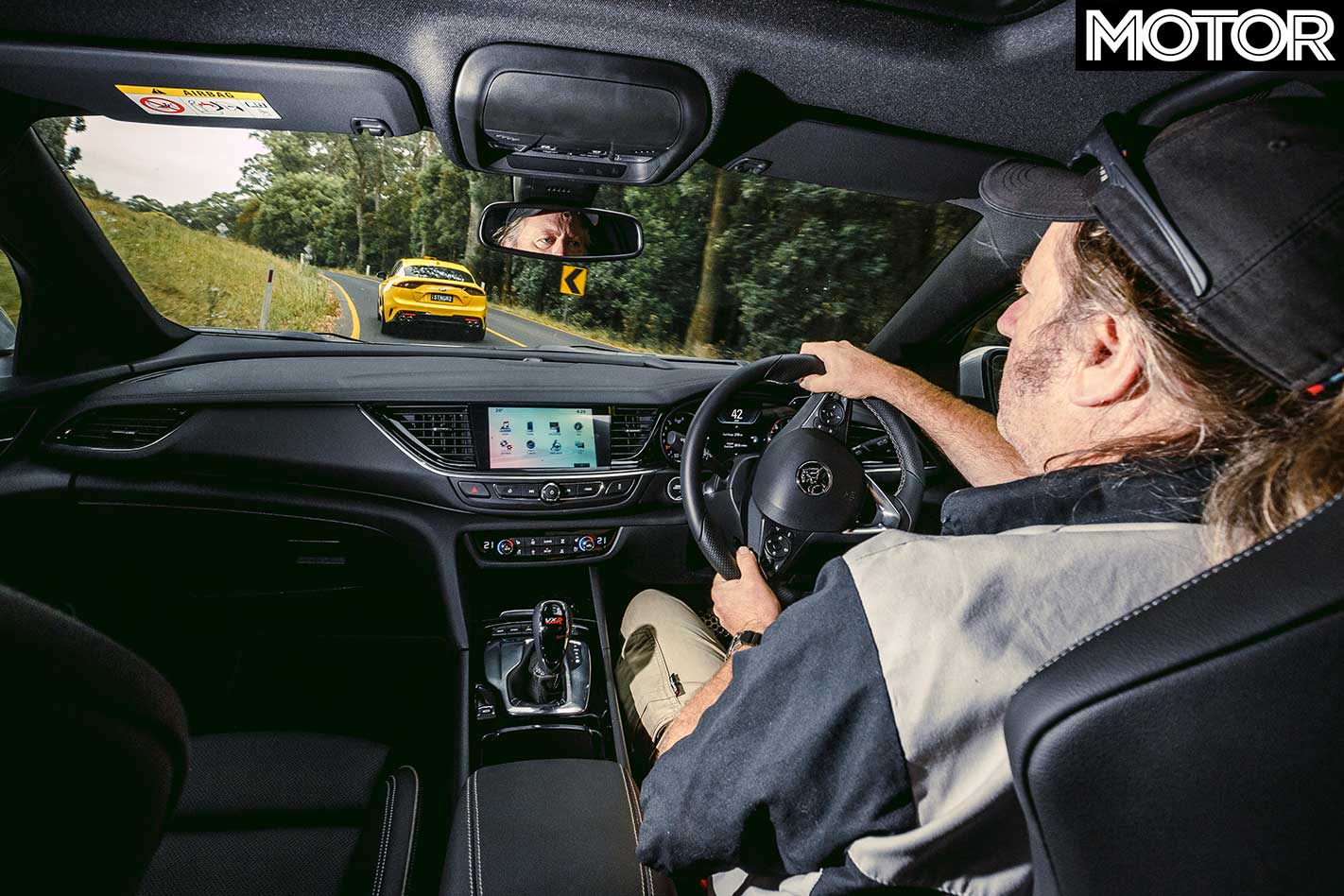
And switching the ZB’s tranny to Sport mode doesn’t fix it, because ninth is still available from 84 onwards. And you’d be amazed (I was) at how much time you spend around the mid-80s in this modern world. I’d be looking for a tuner who can re-flash the thing to rule out top gear below about 110km/h. It is, after all, just software, right? Curse those official fuel-consumption tests.
Beyond that, though, the Holden wins for aural appeal with its meaty V6 yowl, while the Kia sounds like it is lacking. Bring on the optional Kia zorst, I say.
Throw these cars at some corners and the Holden catches up even further. Okay, so it’s got less torque, more grip from its 245/35 20-inch tyres and the added advantage of all-paw scrabble. But it’s also a calmer platform when you start getting into eight-tenths territory and above. Till then, the Kia feels fine, but eventually, the inherent balance in the ZB’s arrangement starts to show through.

There’s a bit of front-end push if you’re too optimistic with your entry speed, but that clutch-pack rear diff and the ability to shuffle torque from front to rear axle makes a big difference when it gets hot and heavy.
I wouldn’t say there’s a huge difference in ride quality between Normal, Sport and VXR modes, but in the latter, there’s definitely a pretty secure, planted feel that comes though the helm, even if the steering itself feels a bit light when you’re pressing on.
The Commodore is a bit slow to obey downshift commands from the paddles and it feels like there’s even a hint of converter slip at times. And the semi-synthesised engine note seems to have been calibrated to make the engine sound slower and lazier than it really is. A couple of times I figured I was holding around 4000rpm, only to look at the tach and discover it was, in fact, time for another cog.
In direct contrast, the Kia always feels urgent and up for it, poking you in the chest and demanding to know if that’s all you’ve got. Problem is, sometimes that’s right at the point where the car itself has tapped the depths of its talent.
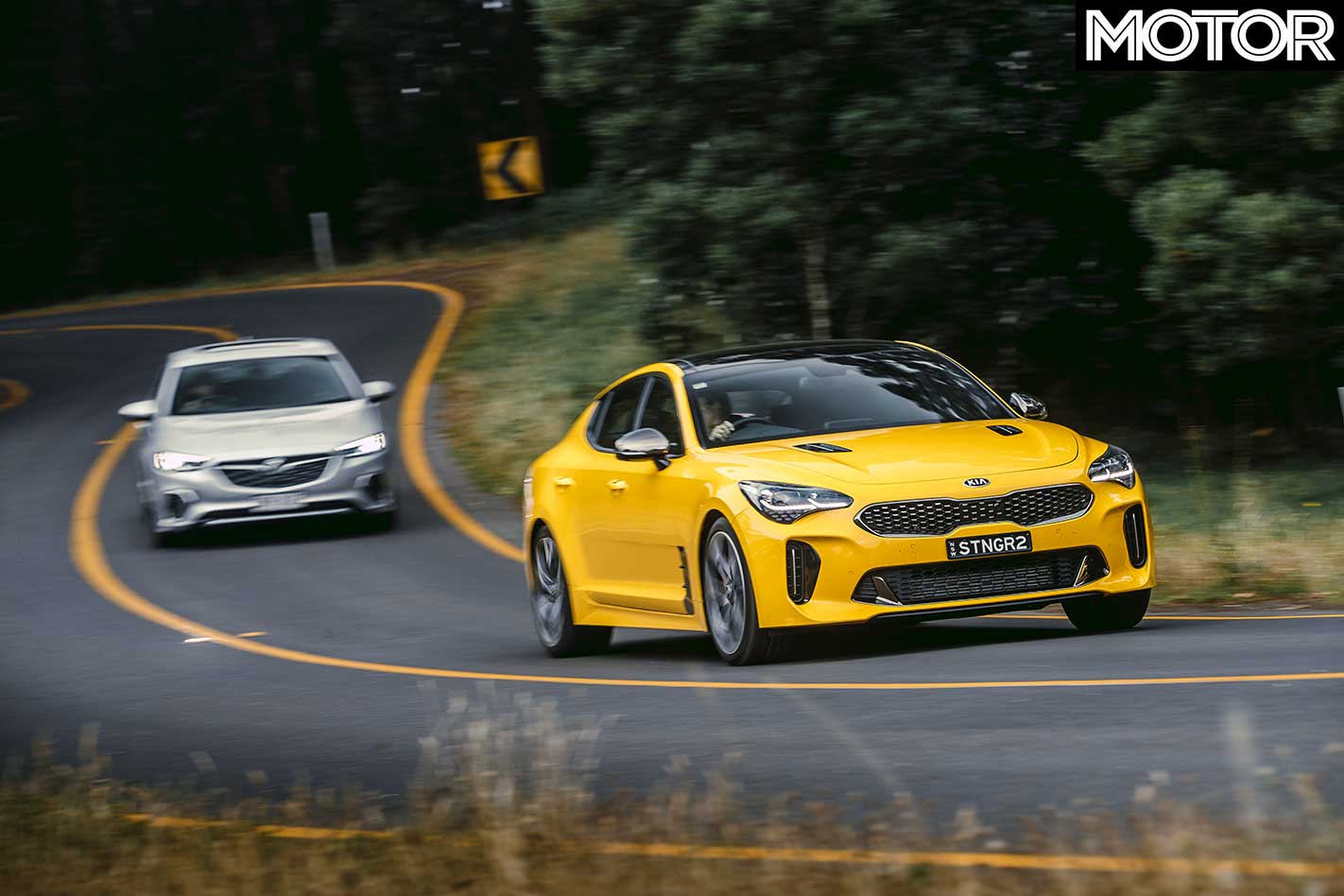
In Sport mode, the Stinger is definitely firmer than the ZB, but actually none the better for it. In fact, mid-corner bumps are not the Kia’s best mate and there’s less accuracy through the tiller, despite a much faster rack ratio which, at first, tries to fool you that the Kia is all business.
But once you get used to the ratio, you also notice that there’s a fairly big dead-spot at the straight-ahead and what info you are getting back up the column is pretty non-committal. Which, if you’re even half smart, should be enough to encourage you to take the same approach.
That said, the Stinger is pretty easy to rotate, purely because you’ve always got enough grunt and, apparently, enough rear weight bias to bring the tail around at will. Fact is, the Kia is quite rear-steery which starts out as playful, but degenerates into ‘hang-on-kids’ as the speed rises.
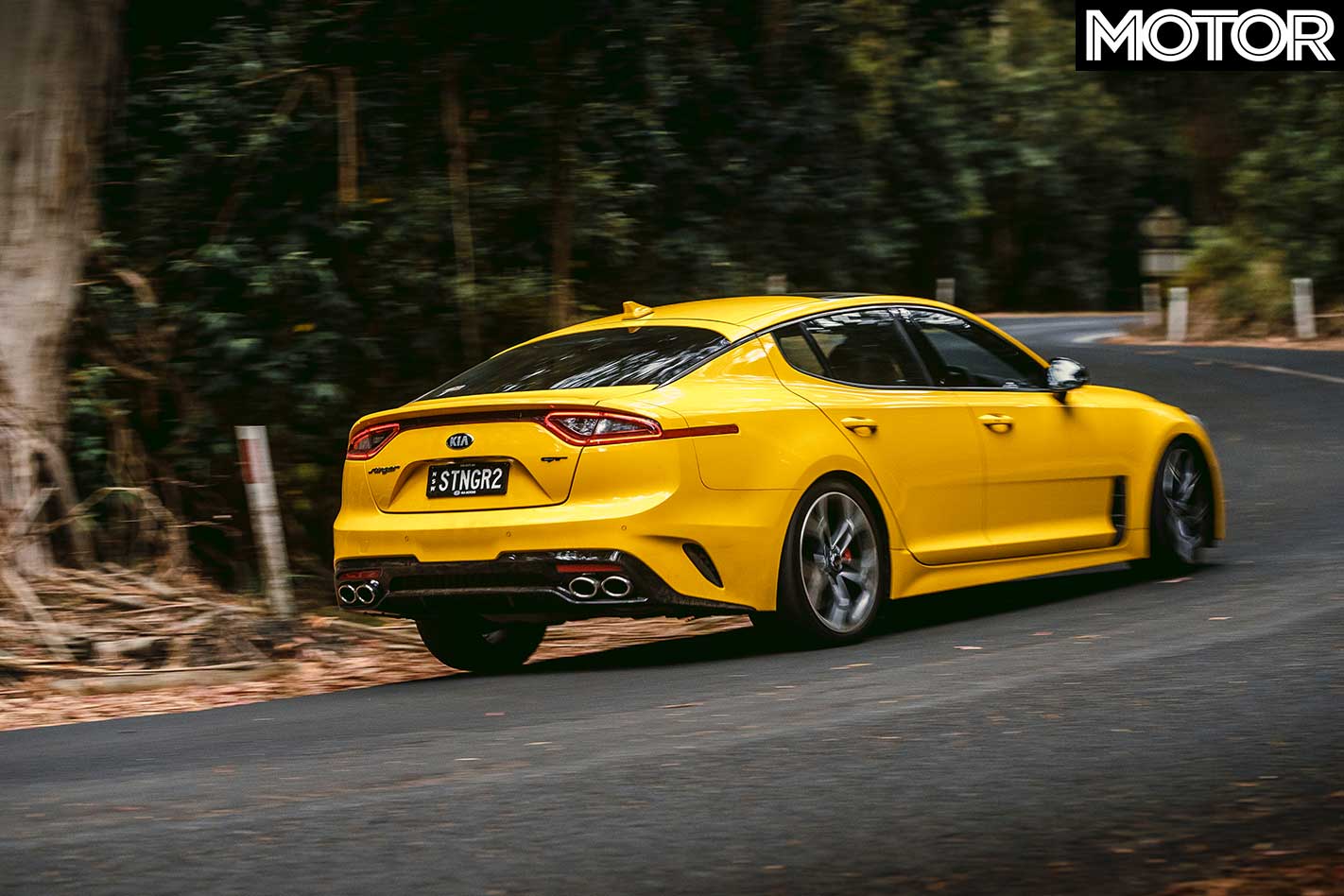
Eventually, you’ll reach the limit of the tyres and the rear grip and the whole plot becomes a slave to whatever Newton-metres are hanging around at the time. And for all that ride firmness, there’s still more body roll and lateral head-toss apparent in the Stinger.
As the top-shelf versions of each car (Stinger GT and Commodore VXR) both cars run Brembo brakes. No, you won’t make them fade at road speeds (even if you are a nutter) and I’d be very surprised if either ever came over faint on a racetrack either.
Other stuff? Well, the Holden has those lovely, firm front chairs that locate you properly, even if they look a bit boy-racer. The Kia’s pews, meanwhile, were a bit narrow for mine, but I’m a fairly broad unit (big bones – ask my mum) and the tykes that run this magazine have never complained.
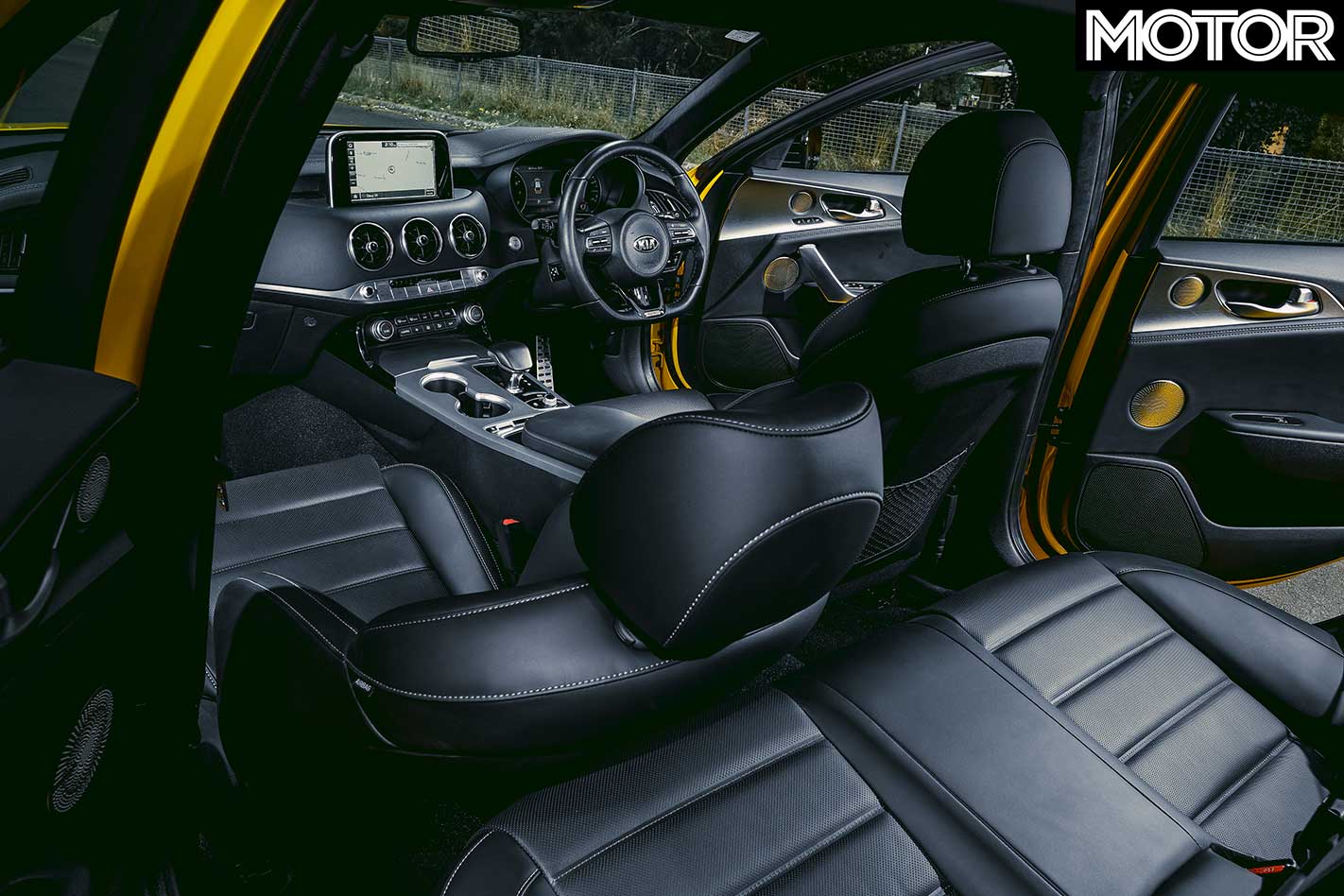
Back seats? Not much in it with plenty of stretching room in each and only the ZB’s roofline and the Stinger’s rear wheel-arch to impede entry and exit slightly. The boots are line-ball, too, and both have fairly high floors that means they won’t be as big as they look.
It’s pretty easy to draw the conclusion that the new Commodore is a smoother, sweeter car in most circumstances. But the surging thrust of that twin-turbo V6 in the Kia is going to swing a lot of decisions. But where does that leave each car when it comes to that inevitable question of which one replaces the family cars we knew and loved?

Well, if you’ve historically craved a six-cylinder Commodore or Falcon, the new Holden will probably do the trick. But if you were a V8 kind of guy, then the Stinger with its edgy manners and swingin’-dick engine will be the one.
Presuming you’re still in the game and haven’t gone out an bought an SUV or a hot-hatch already. But let’s not get on to the topic of relevance. Or we could be here all day.
Interior Quirks
Kia Stinger GT

1 – Since when has a button replaced the traditional park position at the top of the gear selection? To some it’s a bit of an ergonomic fail. But everyone’s doing it… 2 – While the front seats are comfortable, they are a bit too narrow for some and they lack sufficient side bolstering – especially compared to the VXR 3 – The graphics on both the Kia and Holden could be better, but the Stinger’s appear a little more outdated and the speed-zone warning can be slow to update 4 – Why would Kia have gone to the trouble of fitting a heads-up display that doesn’t tell you what gear you’re in? Also, why doesn’t the Kia have stop/start technology?
Holden ZB Commodore VXR
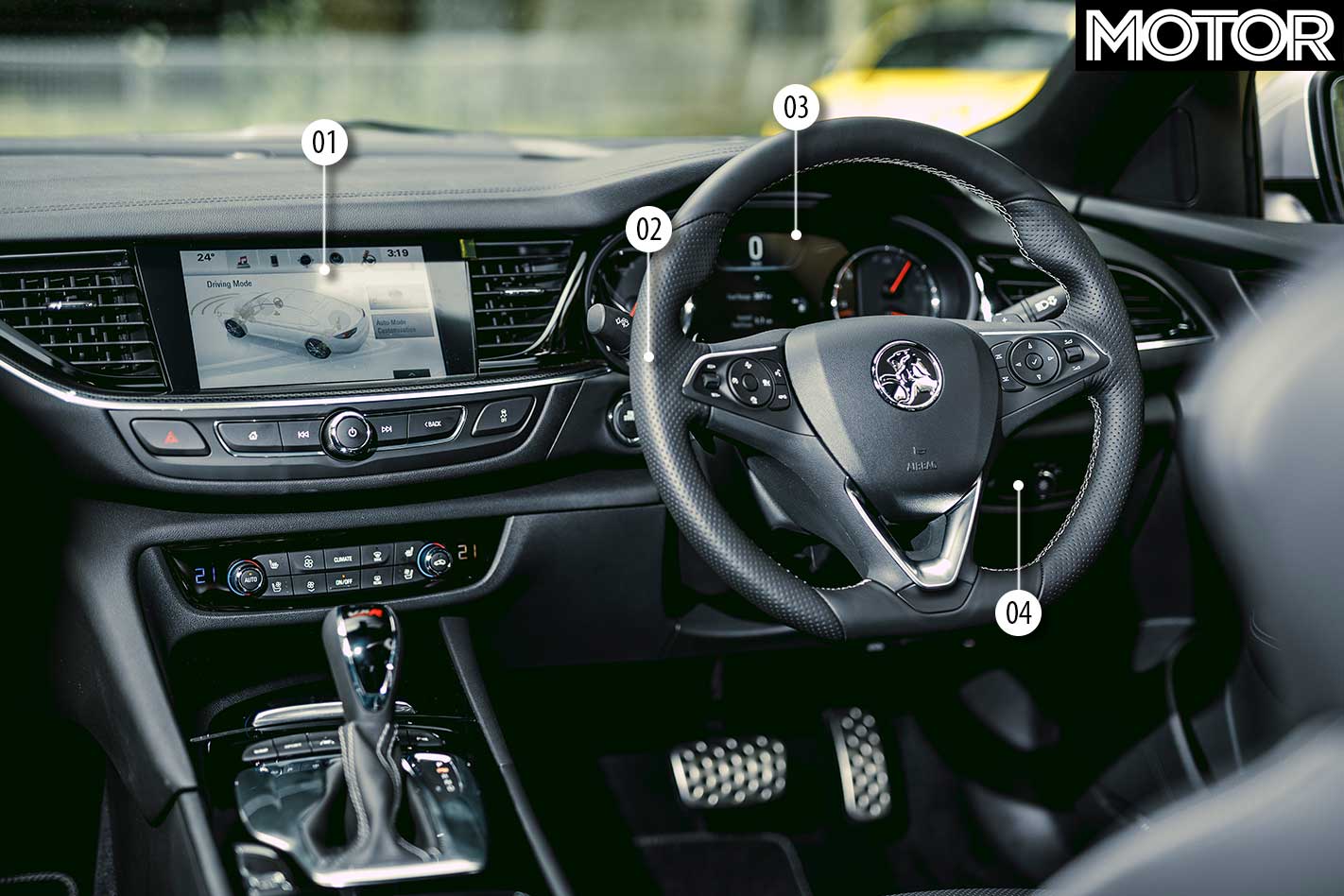
1 – There’s (thankfully) no fiddly track pads or dial to operate the MyLink infotainment system, but the seating position renders the screen too far away 2 – Both interiors are a bit plain given their high price tags, but the Holden is slightly plusher with more gadgets as well as a lot more stitching and soft-touch materials 3 – Why has Holden calibrated the Commodore’s temperature gauge so that the normal coolant temp shows just above the marked increment? 4 – Despite the range-topping status, the Commodore VXR misses out on a power-adjustable steering column and an electronic boot close
Fast Facts
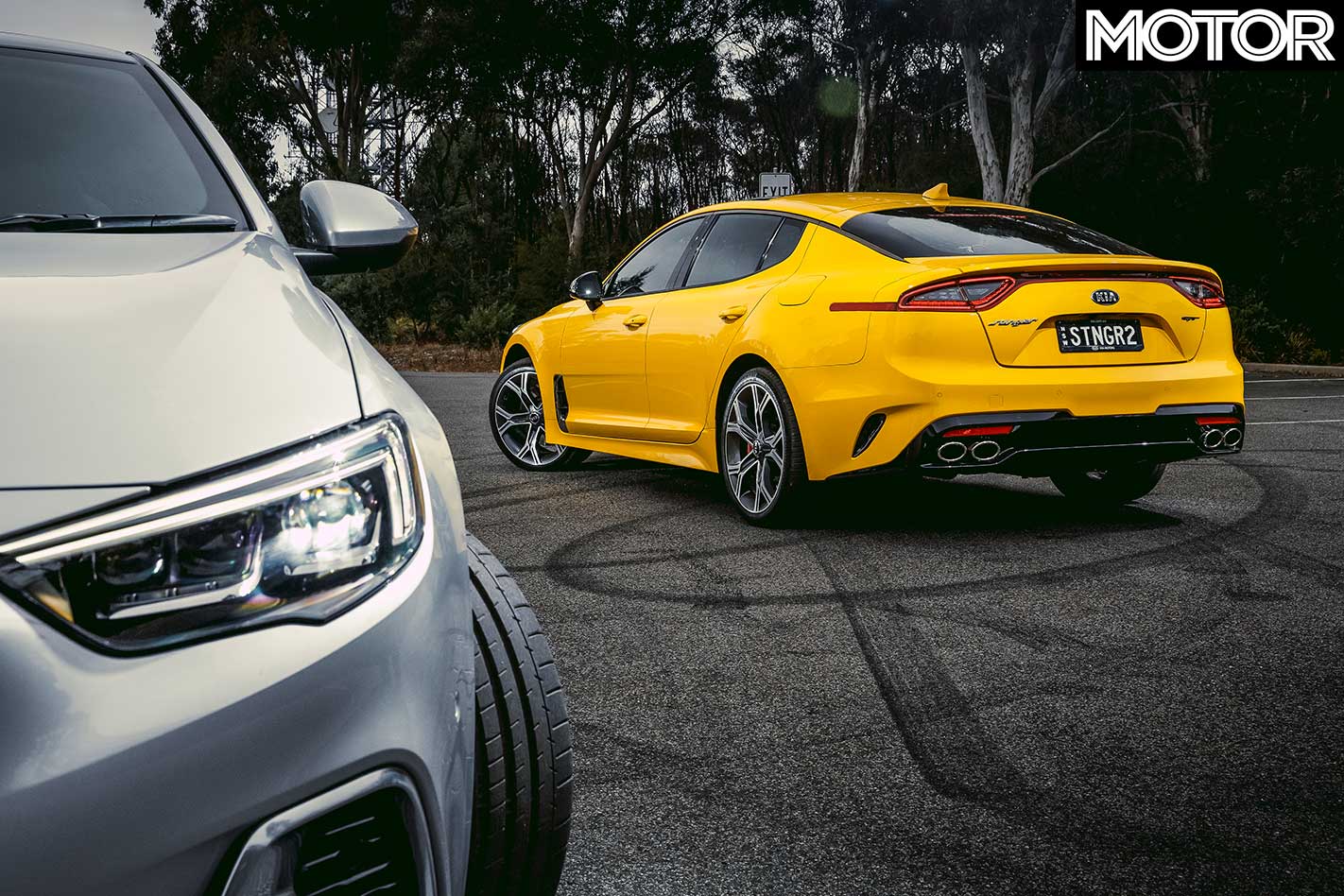
| u00a0 | 2018u00a0Holden ZBu00a0Commodore VXR | 2018 Kiau00a0Stinger GT |
| BODY | 5-door, 5-seat liftback | 5-door, 5-seat liftback |
| DRIVE | all-wheel | rear-wheel |
| ENGINE | 3649cc V6, DOHC, 24v | 3342cc V6, DOHC, 24v twin-turbo |
| BORE x STROKE | 95.0 x 85.8mm | 92.0 x 83.8mm |
| COMPRESSION | 11.5:1 | 10.0:1 |
| POWER | 235kW @ 6800rpm | 272kW @ 6000rpm |
| TORQUE | 381Nm @ 5200rpm | 510Nm @ 1300rpm |
| WEIGHT | 1737kg | 1780kg |
| POWER/WEIGHT | 135kW/tonne | 152kW/tonne |
| TRANSMISSION | 9-speed automatic | 8-speed automatic |
| SUSPENSION (f) | HiPer struts, anti-roll bar, adaptive dampers | MacPherson struts, adaptive dampers |
| SUSPENSION (r) | Five-link, coils, anti-roll bar, adaptive dampers | Multi-link, coils, anti-roll bar, adaptive dampers |
| L/W/H | 4897/1863/1455mm | 4830/1870/1400mm |
| WHEELBASE | 2829mm | 2905mm |
| TRACKS | 1596/1599mm (f/r) | 1596/1619mm (f/r) |
| STEERING | electrically-assisted rack-and-pinion | electrically-assisted rack-and-pinion |
| BRAKES (f) | 345mm ventilated discs, 4-piston calipers | 350mm ventilated discs, 4-piston calipers |
| BRAKES (r) | 315mm ventilated discs, single-piston calipers | 340mm ventilated discs, 2-piston calipers |
| WHEELS | 20.0 x 8.5-inch (f/r) | 19.0 x 8.0-inch (f); 19.0 x 8.5-inch (r) |
| TYRES | Michelin Pilot Super Sport; 245/35 R20 (f/r) | Continental ContiSportContact 5; 225/40 R19 (f); 255/35 R19 (r) |
| PRICE | $55,990 | $59,990 |
| PROS | Resolved and sophisticated; roomy inside; lots of grip | Engine is a ripper; very fast in a straight line; GT looks good, too |
| CONS | Itu2019s good, but itu2019s no VF SS-V Redline | Gearbox, sketchy handling at the limit |
| RATING | 3.5 out of 5 stars | 4 out of 5 stars |

